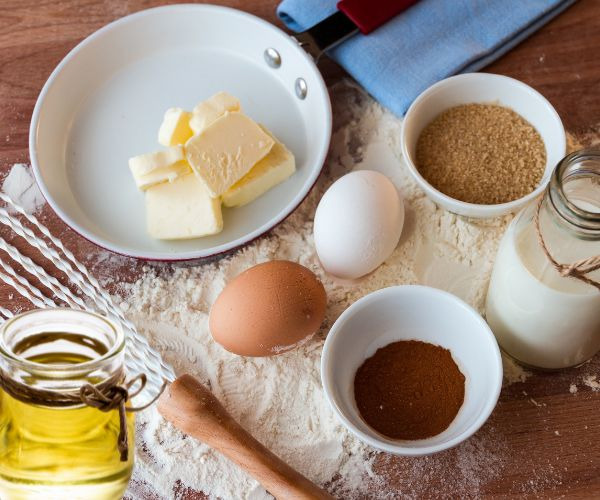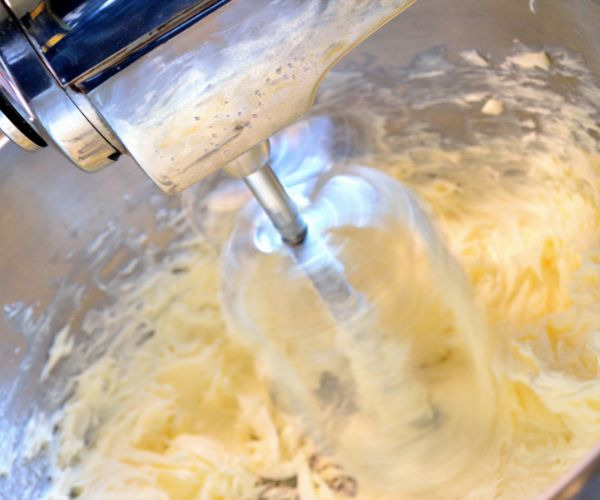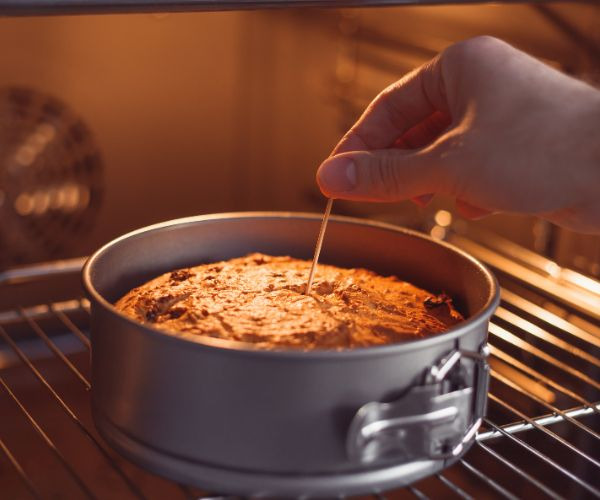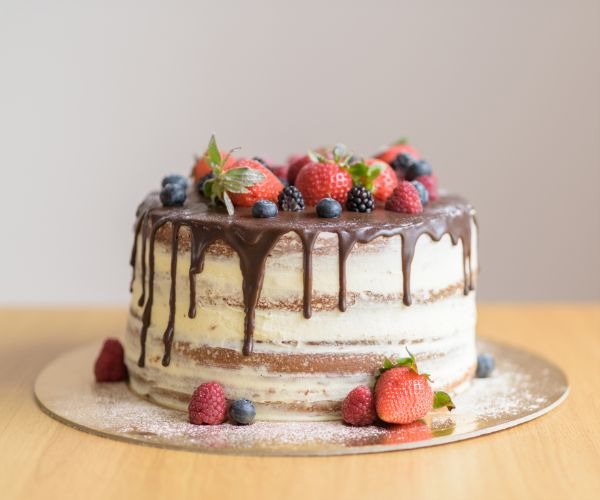Bakery Secrets to Moist Cakes Recipes: Pro Tips for Home Bakers
Get Bakery Secrets to Moist Cakes Recipes plus expert baking tips, so your cakes come out moist, fluffy, and packed with fresh flavor every time.
KITCHEN TIPS & TECHNIQUES
Shari Smith
8/6/202510 min read
This post may contain affiliate links, and I may earn a commission if you choose to make a purchase through them.


Ever wondered why bakery cakes get that perfect, soft texture every time?
The secret isn't just skill or luck—it's a mix of tried-and-true techniques and the right ingredients.
Texture is everything in cake baking, and it's what keeps you coming back for another slice.
Pro bakers have a few tricks up their sleeves to keep cakes moist and tender, even after a day or two.
In this post, you'll learn the real bakery secrets to moist cakes recipes that you can use at home.
Get ready to bake cakes that taste just as fresh and delicious as the ones behind any bakery counter.
The Science Behind Moist Cakes


Bakery secrets to moist cakes recipes aren't just magic—they're a blend of smart science and chef-tested methods.
Understanding how certain ingredients and mixing steps work can change your baking forever.
When you know what makes a cake moist, you can turn out bakery-level results every time you bake.
Essential Ingredients That Create Moisture
Every bite of a fluffy, soft cake owes its texture to a few humble ingredients.
Here's how each type helps build that moist crumb everyone loves:
Fats (Oils & Butter): Fats coat flour proteins, slowing down gluten formation. Less gluten means a softer, lighter cake. Oils, like vegetable or canola, flow better at room temperature and lock in moisture, giving cakes a bouncy, tender feel. Butter adds rich flavor and some moisture, though it tends to make cakes a bit firmer than oil alone.
Dairy (Milk, Buttermilk, Sour Cream, Yogurt): Dairy adds moisture but also a bit of acid. This acid can weaken gluten, which means the cake is less likely to turn out tough. It also reacts with baking soda for extra lift.
Eggs: Eggs hold everything together and add a touch of fat and water, giving cakes both structure and richness. The yolks bring in fat for smoothness, while the whites help the batter trap air.
Sugars: Sugar pulls in water from other ingredients and slows down its escape during baking. This keeps the crumb soft and moist, and helps cakes stay fresh longer.
Liquids (Water, Juice, Coffee): Extra liquid gives batter the right texture and makes it easier for all the ingredients to blend smoothly. These liquids turn into steam as the cake bakes, creating bubbles and lightening the cake.
In bakery secrets to moist cakes recipes, balancing these ingredients matters. Too much flour leads to dryness. Too little fat makes a cake crumbly.
The magic is in using a mix that brings enough moisture and controls gluten so the texture stays soft, not tough.
Emulsification: Why Mixing Matters
Great ingredients alone don't guarantee success—how you mix them changes everything. Emulsification is the process of getting fats and liquids to blend into a smooth, even batter.
This step makes sure moisture is held evenly throughout your cake, so you never get dry edges with a gummy center.
Mixing techniques can look simple but make a real difference:
Creaming Butter and Sugar: This step beats air into the butter, building volume and even distribution. The sugar cuts into the butter, helping trap air for a lighter texture.
Gradual Ingredient Addition: Add eggs one at a time or alternate dry and wet ingredients, so the batter stays smooth and doesn't separate. This method helps emulsify the mix, keeping everything stable.
Right Beating Times: Over-mixing after you add flour can overwork gluten—leading to dense, dry cake. Mix just until combined once the flour is in.
To sum up, a cake’s moistness relies on the perfect blend of ingredients and a careful mix. Pay attention to both and you’ll unlock true bakery secrets to moist cakes recipes.
Bakery-Approved Methods for Ultimate Cake Moistness


Unlocking the softest crumb and richest flavor isn't magic—it's about following time-tested techniques used by bakeries everywhere.
There are a few steps pros never skip if they want their cakes to stay moist from the first slice to the last.
Here’s how you can use these bakery secrets to moist cakes recipes at home and bake cakes that make people ask for seconds.
Perfecting the Creaming Method
The creaming method is the backbone of many bakery cakes. It’s not just about mixing butter and sugar together—it's a science that sets the stage for moisture and structure.
Here's how bakeries do it:
Start with room temperature butter. Soft butter blends smoother and traps air better, building a light base for your batter.
Beat butter alone first. Use a stand mixer or hand mixer to whip the butter until it’s creamy. This step by itself takes about one minute.
Slowly add sugar. Pour sugar in gradually while the mixer runs on medium. As sugar works through the butter, it creates tiny air pockets that help the cake rise and stay tender.
Cream until pale and fluffy. The mixture should look lighter in color and increase in volume. This could take 3-5 minutes.
Scrape the bowl often. Make sure no dense butter sticks to the sides—scraping ensures everything combines evenly.
Why does this method make a difference? Creaming incorporates air, setting up a structure that welcomes moisture and holds onto it. Skip this step, and you might get a flat, tough cake instead of a soft bakery-style crumb.
Understanding the Role of Syrups and Soaker Solutions
Bakery cakes stand out because they stay moist for days. The secret isn’t always in the batter, but in what gets added after baking.
So how do bakeries pull this off? With syrups and soakers:
Simple syrup: A mixture of equal parts sugar and water, boiled until clear and then cooled. Bakeries brush or drizzle this onto warm cakes, letting it soak in.
Flavored syrups: Add a splash of vanilla, citrus zest, rum, or coffee to the syrup for layers of extra taste and aroma.
Fruit soakers: For fruity cakes, a juice-based syrup or jam thinned with syrup brings even more moisture and punch.
After baking, poke holes in the cake with a skewer or fork. Brush or spoon syrup over slowly, allowing it to seep deep inside the crumb without making it soggy.
The result is a cake that stays moist and never dry, even after a couple of days on the countertop.
How to Use Room Temperature Ingredients for a Tender Crumb
Ever notice pro bakers leave eggs, milk, and butter out before they start baking? It's not by accident. Using room temperature ingredients is a quiet secret behind the best bakery secrets to moist cakes recipes.
Why does temperature matter?
Even mixing: Cold butter and eggs don’t blend smoothly, leaving clumps or creating uneven pockets. Batters with cold ingredients often trap less air and can’t hold moisture well.
Uniform structure: Room temperature ingredients combine to form a smooth, silky batter. This helps air and fat spread out evenly, giving the cake a finer, more tender crumb.
Better rise: When everything is the same temperature, the cake bakes more evenly. This makes sure no part dries out while it cooks.
A few ways to get it right every time:
Take eggs and dairy out of the fridge about 30-45 minutes before starting.
If you forget, place eggs in a bowl of warm (not hot) water for 10 minutes.
Cut butter into cubes for quicker softening.
By following this simple step, you give your cakes a head start on tenderness and keep them moist longer—just like bakery professionals do.
Common Home Baking Mistakes That Lead to Dry Cakes


Even with the best bakery secrets to moist cakes recipes, a few easy-to-make mistakes can turn your dreams of a soft, bakery-style treat into a disappointing, dry slice.
These are simple traps for any home baker, but they’re easy to avoid once you know what you’re looking for.
Let’s look at two mistakes that cause dry cakes and how staying mindful can keep things moist—just like you want.
How Overbaking Ruins Moisture
Overbaking is one of the quickest ways to dry out any cake, even when you’re following all the best bakery secrets to moist cakes recipes.
All ovens are a bit different, so relying only on a cookbook’s suggested time can catch you off guard.
Moisture loss: Every extra minute in the oven lets more steam escape. Since steam is what creates that fluffy, moist interior, too much oven time leaves your cake dry and crumbly.
Crusty edges: Overbaked cakes often form a thick, tough crust on the outside that makes every bite less pleasant.
Taste suffers: Longer baking can even make flavors taste flat, masking the richness you want.
To avoid this, always:
Start checking your cake a few minutes earlier than the recipe says.
Use a toothpick to test for doneness: If it comes out with a few moist crumbs, your cake is ready.
Know your oven’s hot spots and adjust racks or rotate pans if your bakes tend to brown faster on one side.
Why Accurate Ingredient Measurement is Critical
Dry cakes often start long before the oven even turns on. Accurate measuring is a key part of any bakery secrets to moist cakes recipes. Even a little extra flour or not enough liquid can make a big difference in the end.
Too much flour: Scooping flour straight from the bag packs it down, often giving you much more than you need. Packed flour soaks up more liquid, drying the cake’s texture.
Not enough fat or sugar: Both help hold water and keep things soft. Skimping—even accidentally—means a drier crumb.
Skipping sifting: Lumpy or compacted flour doesn’t blend well, causing dry pockets in the batter.
Make accurate measurement easy by:
Using the spoon-and-level method for flour: Lightly spoon it into the cup, then level off with a knife.
Measuring liquids in a clear cup at eye level.
Leveling off baking powder, baking soda, and other small ingredients to keep the balance right.
Careful measuring avoids frustration and helps your cakes turn out moist and bakery-quality every single time.
Common avoidable errors that lead to dry cakes include:
Overbaking or using too high a temperature
Using packed flour or skipping sifting
Not measuring liquids or fats accurately
Skipping the step of bringing ingredients to room temperature
Forgetting to check for doneness early
Keeping these tips in mind every time you bake will set you up for success, whether you’re trying a new recipe or perfecting an old favorite.
If you avoid these errors, every cake can be as moist as one from your favorite bakery.
Unexpected Bakery Tricks for Extra-Moist Cake Recipes


If you want cakes that taste bakery-fresh every time, there are a few lesser-known tricks you need to try.
Beyond the standard ingredients and mixing methods, pro bakers have some creative ways to lock in extra moisture and boost flavor in their best cakes.
Let’s dig into two surprising secrets used in bakery secrets to moist cakes recipes that work like magic.
Incorporating Fruits, Vegetables, and Puddings
Home bakers are often surprised to learn just how often bakeries slip in fruit, vegetables, or pudding mix to make cakes incredibly moist and flavorful.
These ingredients not only add their own unique taste but also help the cake batter hold onto moisture, so every bite stays tender longer.
Here’s how you can get creative with them at home:
Applesauce: Swapping in applesauce for part of the fat or eggs makes the cake soft and subtly sweet. Unsweetened applesauce works best, and it blends right into most classic batters without taking over the flavor. Try it in chocolate or spice cakes for a boost in tenderness.
Bananas: Overripe bananas are bakery gold. Their natural sugars and soft texture keep cakes extra-moist while adding mild sweetness. Banana blends well with chocolate, vanilla, and even some nutty spice cakes.
Carrots: Grated carrots, as in carrot cake, bring in vitamins, color, and a lot of natural moisture. They melt into the batter as the cake bakes. This old-school trick gives a melt-in-your-mouth crumb even days after baking.
Pudding Mix: Adding instant pudding mix straight to your batter isn’t just for boxed cakes. Even scratch recipes can benefit from a small box of pudding. The cornstarch and sugar inside the mix pull in and hold moisture, plus the pudding’s flavor adds depth. Vanilla, chocolate, and even banana pudding mixes are all fair game.
When using these add-ins, only substitute part of the wet ingredients—don’t swap 100 percent, or the cake could get heavy. Aim for about half a cup per standard cake recipe.
These ingredients make the cake more forgiving if you accidentally bake it a few minutes long or store it for a couple days, keeping every slice soft and rich.
Steaming and Resting Techniques
Bakery secrets to moist cakes recipes go beyond what you put in the batter. Sometimes, pro bakers use after-bake methods like steaming or resting the cake to maximize moisture and texture.
These tricks take patience, but the payoff is that just-from-the-oven softness everyone loves.
Steaming Cakes After Baking
Steaming isn’t just for bread pudding or cheesecakes. Some bakers steam traditional sponge or pound cakes to infuse a final hit of moisture.
Remove the cake from the oven and let it sit in the pan for about five minutes.
Place the cake on a wire rack, cover it loosely with a clean, damp kitchen towel, and leave it for 20-30 minutes. The steam trapped under the towel keeps the outer crust soft and prevents it from drying out as the cake cools.
You can also try placing the warm cake in a large container with a small bowl of hot water. Close the lid for 15-20 minutes, letting the steam gently bathe the cake for a tender finish.
Resting Cakes to Trap Moisture
Patience pays off when it comes to cake softness. Just like with cookies or brownies, letting a cake rest can make a huge difference.
Leave the cake in the pan for about 10 minutes after baking, but don’t rush to un-mold it too soon. This prevents steam from escaping and keeps moisture locked into the center.
Once removed from the pan, wrap the slightly warm cake in plastic wrap or foil. This seals in steam, letting the crumb set and reabsorb released moisture. After a rest, the cake often has a tighter, more melt-away crumb and tastes even richer.
Pro tip: If you’re making layers ahead, wrap each layer while warm and freeze. When thawed, these cakes taste just as moist as fresh-baked—the extra rest time in the freezer actually helps even more moisture soak in.
Working these tricks into your routine will help your cakes rival any bakery’s, right from your home kitchen. Keep experimenting with add-ins and after-bake techniques for your softest, richest cakes yet.
Conclusion
Bakery secrets to moist cakes recipes aren’t out of reach—they’re a mix of easy habits and simple ingredient swaps that make a real difference.
Home bakers who try these methods see softer textures and better flavor, slice after slice. Use the right fats, mix batters with patience, and experiment with syrups or surprising add-ins.
The small steps you take, like accurate measuring and gentle post-bake care, help you get bakery-quality results.
Try these tips in your own kitchen and see how much better your cakes can be. If you discover a new twist on an old favorite, share it in the comments below.
Thanks for stopping by, and happy baking as you put these bakery secrets to moist cakes recipes to work at home!
Southern Spice Homestyle Delights © 2025. All rights reserved.
Address
Rayville, La 71269
Want more from Southern Spice?


Get recipes, cooking inspiration, and exclusive information right to your inbox!
Categories






